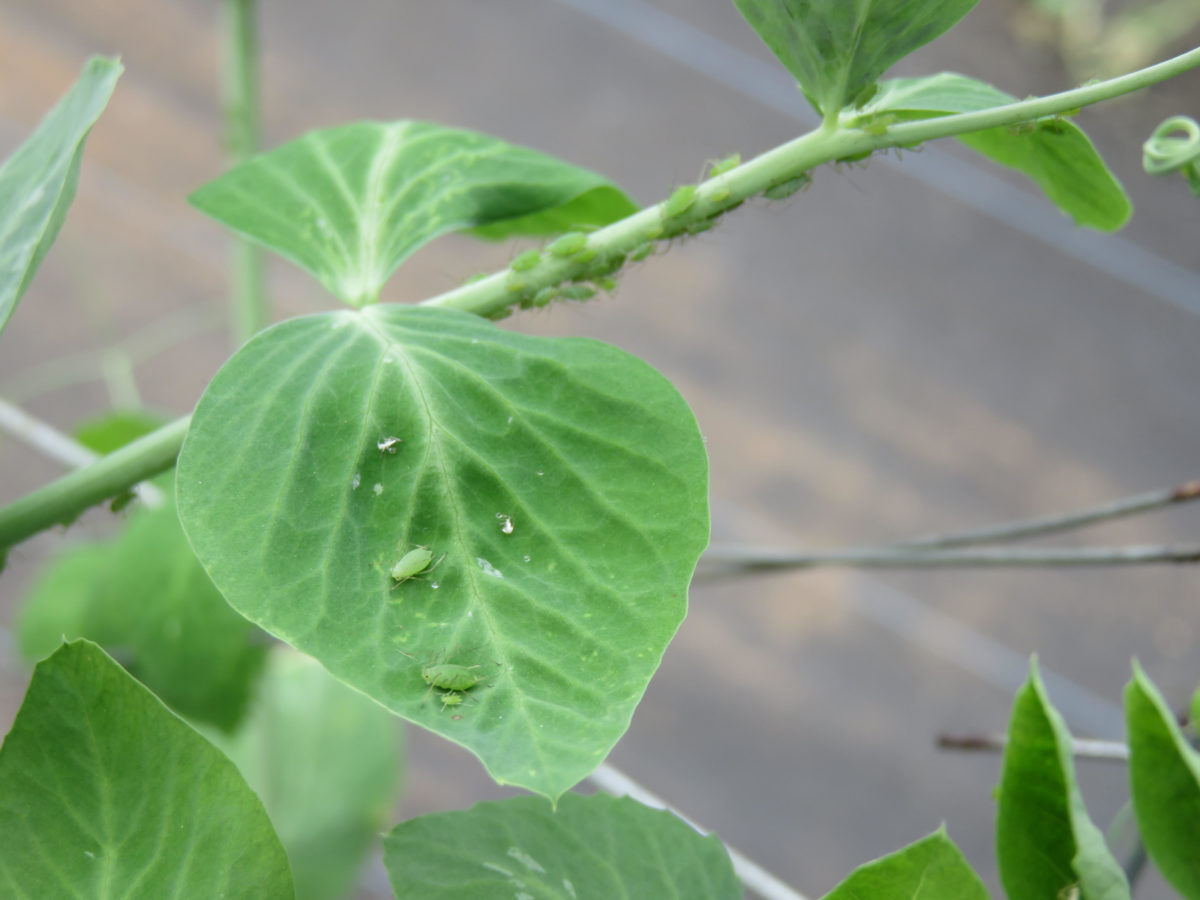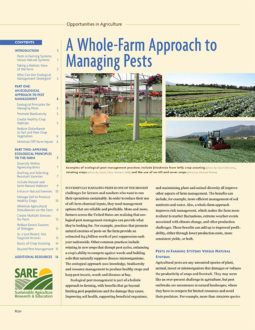
The strategies outlined in this publication focus on pest management, but their benefits do not stop there. Taken together, ecologically based practices can result in more efficient use of farm resources, lower input costs, a safer work environment and greater overall productivity. Cover crops are a prime example of a strategy with multifaceted benefits. Depending on how they are used, cover crops improve nutrient and water management, reduce erosion and protect water quality, in addition to managing pests.
The SARE bulletin Cover Crop Economics describes how cover crops can quickly become profitable when they are used in different management situations. These situations include when herbicide-resistant weeds are present, compaction is an issue, available water is at a deficit or irrigation is needed, or when nutrients need to be managed. Explore the bulletin to read further about different cases where using cover crops may be profitable for your operation.
Rotating your crops is another ecologically based strategy that provides multiple benefits, including breaking pest cycles. Creating conservation buffer strips at field edges protects water quality and supports wildlife while also providing habitat for important beneficial organisms. Along with allowing beneficial soil organisms to thrive, conservation tillage leads to lower fuel and labor costs. Practices that result in more careful use of inputs, such as scouting, monitoring, IPM and variable rate applications, not only create a more favorable growing environment for crops, but can also save money and protect both the natural environment and the health of agricultural workers.
The goal of ecological pest management is to produce healthy, high-quality food in a sustainable manner. Strategies that are not economically or socially feasible are not sustainable, so the practices outlined in this publication should be tested in small trials before scaling up. State and federal cost-share programs like USDA’s Environmental Quality Incentives Program (EQIP) or Conservation Stewardship Program (CSP) provide financial and technical assistance that can help ease the costs of adopting new strategies like high tunnels, conservation buffers and cover crops. Your farming system may be unique, but the ecological principles described here are universal. Taking the ecological approach means discovering more about the natural processes on your farm and managing habitat to strengthen them in ways that maintain crop productivity. It represents a long-term commitment to testing, tweaking and learning.
Managing Pests in a Changing Climate
In a changing climate, unpredictable weather events like flooding and extended drought conditions, as well as shifting precipitation and temperature patterns, may impact the severity of insect, weed and disease pests. Changes in temperature and precipitation can influence insect pest dispersal patterns, abundance and survival. Warmer, wetter growing seasons may result in higher weed and disease pressures in important crops. Milder winters may result in higher survival by pests that normally die in cold winters. Wetter growing seasons mean less time available for field operations that depend on favorable weather conditions, such as cultivation or planting.
Producers are taking advantage of holistic ecological strategies that contribute to climate-resilient cropping environments. For example, a well-designed cover crop cocktail will oftentimes improve water use during a drought by adding surface residue and improving soil structure. This is in addition to the pest- and nutrient-management benefits associated with cover crops already described. Learn more about these and other strategies producers are using to mitigate climate risk in the SARE bulletin, Cultivating Climate Resilience on Farms and Ranches.
